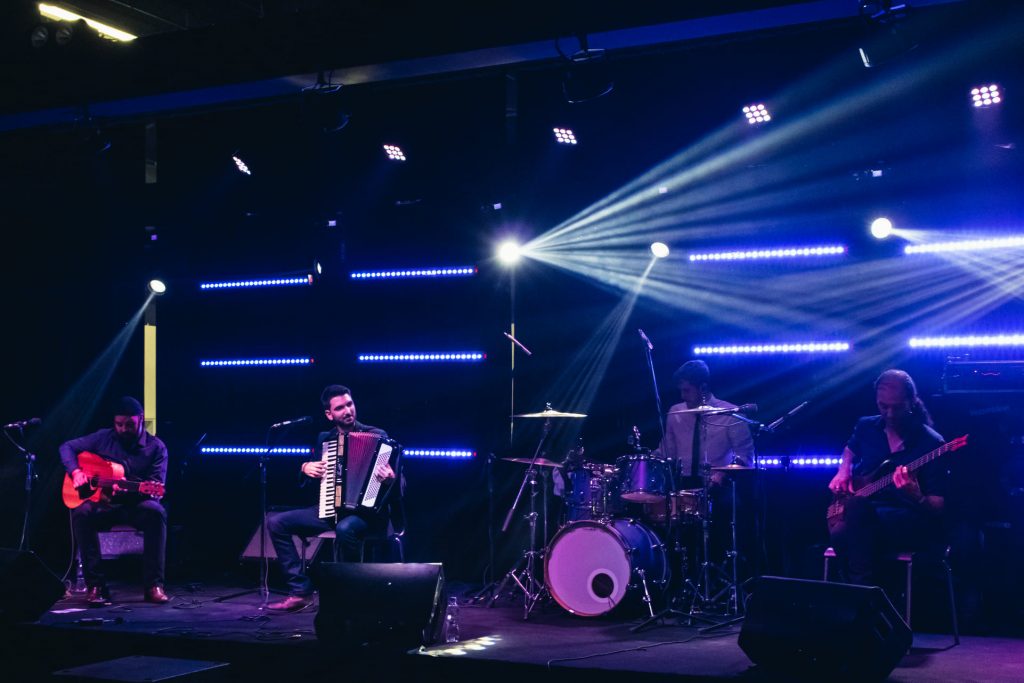


#BLUE TANGO INSTRUMENTAL PRO#
Weill’s catchy-as-velcro music, which works perfectly also as an instrumental-only number with the saxophone “singing” the vocal lines (in The Threepenny Opera Suite played by Chicago Pro Music on Reference Records), instantly and vividly evokes Berlin in the hedonistic and cynical 1920s.Īlmost as well known is Danish composer Jacob Gade’s 1925 sumptuous orchestral “Jalousie,” originally written to accompany the popular silent film Son of Zorro.

Sung (on the 1954 New York cast Decca recording) as a duet for two disillusioned lovers-the parasitic male and his paramour who supports the both of them-it both celebrates and mocks the mixed motives that bind them together. One of the earliest to do so was Kurt Weill, who (with Bertolt Brecht) wrote his “Tango Ballade” for 1928’s Threepenny Opera. Theater composers quickly recognized the tango’s potential to dramatize the ecstasies and ironies of love. They’re merely an attempt to delineate an unruly and diverse realm, always with the proviso that tango’s pungent blend of stylized elegance and moody sensuality remains ever protean and unpredictable.

(Album titles are included in descriptions of recommended tangos so readers should be easily able to find the recordings.) These four categories make no pretense to be mutually exclusive or exact. The intent is to give some idea of the variety and scope of tango as a musical, rather than dance, phenomenon, and to suggest some exemplary tangos well worth seeking out in four categories: Theatrical and Popular Song Tangos, Jazz Tangos, Piazzolla’s Nuevo Tango, and Art Music Tangos. The territory of tango is immense, and this brief sketch of its domain doesn’t aim to be comprehensive much must be touched on only lightly. Some of Piazzolla’s tangos are danceable, but many are meant to be enjoyed as a kind of world music or even as fully-fledged art music to be listened to in a concert setting as one might a string quartet or a symphony. late in his career after decades of renown in Europe. And they can take yet another form, too, as a hybrid that combines indigenous and classical traditions into a sort of (often extended and sometimes partly improvised) rhapsody-a form explored most famously by Argentinian Astor Piazzolla, who broke into widespread cultural awareness here in the U.S. They can also be songs-in musicals, in movies, on stage-or popular hits to sing or hum along with. Tangos can be music for the recital or concert hall. Tango, then, though it began as music for a (somewhat disreputable) dance that quickly caught on among those with “advanced” tastes, was soon adapted to many different kinds of musical idioms and uses. But the tango has proved far more popular and more durable than any other such modern-era dance craze. Ragtime, jazz, and popular dances such as the Charleston, shimmy, and foxtrot were soon adopted by forward-looking composers and cast as recital and concert pieces. The beguiling tunes and insinuating rhythms of tango music not only attracted dancers and dance bands they also caught the attention of composers around the world who in the late 19th and early 20th century were zealously exploring their national heritage of folk music and now began delving into vernacular music from cities as well as from the countryside. Tango seduced avant-garde artists too, enacting the insolence, eroticism, transgression, and enthrallment central to such au courant movements as Futurism, Dada, and Surrealism. It appealed strongly to cosmopolitan Parisians already fascinated by the sensual, “primitive,” and voluptuous innovations of Diaghilev’s Ballets Russe as well as the provocative syncopations of jazz also recently imported from the New World. The basic steps are simple, but can be elaborated to a high level of bravura and finesse. It’s easy to see why: urban and urbane, the tango is unhurried but athletic, elegant but sensuous, a tug-of-war between precision and abandon, a choreographic stylization of seduction. First picked up among sophisticated Parisian socialites, it quickly became a hugely popular dance craze, spreading rapidly to London, Berlin, and New York City. But the tango became an even more successful transplant when it leapt across the Atlantic and caught on in Paris in the early 1900s. It began as a souped-up habanera, a slower dance made famous in 1875 (and familiar to almost everyone still) from Bizet’s hyper-sexed opera Carmen. The tango was born in the late 1800s in Buenos Aires, where it was first danced in grimy bars and brothels.


 0 kommentar(er)
0 kommentar(er)
